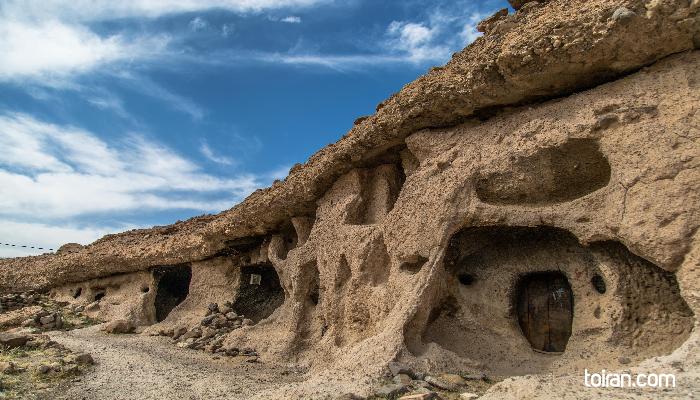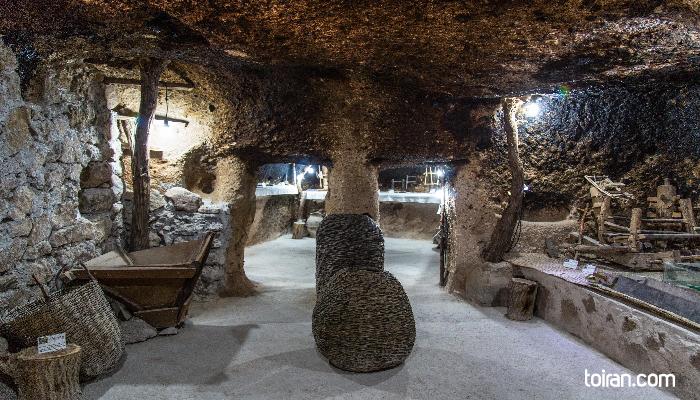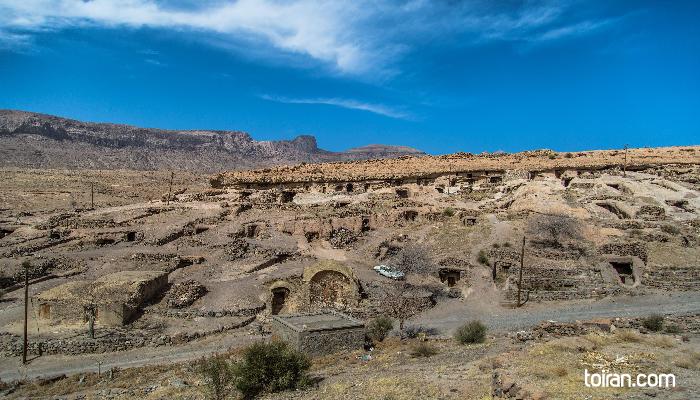Meymand or Maymand is a village in Kerman Province close to the city of Shahr-e babak where the founder of the Sassanid (226-651 CE) dynasty, Ardashir the Unifier (180-242 CE), is said to have been born. Based on archeological finds, experts believe the village is 3,000 to 8,000 years old. The village thrived under the Sassanid’s and even today Middle Persian words are common in the dialect spoken by villagers.
Meymand resembles Cappadocia in Turkey and Kandovan Village in East Azarbaijan Province in that all three have stone-carved homes. Unlike Cappadocia which was abandoned by its residents, Meymand is still inhabited and while Kandovan was built to protect its population from attacks by the invading Mongol army in the 13th century, there is no evidence that Meymand ever came under attack.
The people of Meymand are agro-pastoralists, growing crops and raising cattle to make a living. Villagers also sell dry and fresh walnut, almonds and other nuts to tourists to supplement their income.
Meymand has extremely cold winters and mild summers. Villagers live a semi-nomadic lifestyle moving between four different settlements in the village throughout the year.
From the end of winter until late spring, villagers live in Sar-e Aghol houses on the southern fields. There are in two different types Sar-e Aghol homes: Markhaneh and Mashkdan.
Markhaneh structures are circular houses built partially underground to shelter inhabitants from the wind. They have low dry stone walls and roof coverings of wood and wild thistles. Temperatures inside these homes seldom vary and are almost always consistent. Mashkdan homes are built above ground and have dry stone walls with conical roofs made of branches. Some of the buildings used to house cattle have barrel vaulted brick or stone roofs.
In summer and early autumn Meymand villagers move to Sar-e Bagh houses which are located near seasonal rivers. These homes have dry stone walls that support roof structures of vertical and horizontal timbers covered with grass. Some Sar-e Bagh houses have taller stone walls and conical roofs. These homes have roofless stone pens where cattle is collected.
Sar-e Aghol and Sar-e Bagh homes are temporary, seasonal buildings which are generally re-constructed each season and embody a traditional practice that has persisted for generations.
From late autumn to late winter, Meymand villagers live in cave dwellings known as Kitche which are carved out of soft rock and reach up to five houses in height. Kitches have between one to seven rooms that are used as living quarters, stables or for storage. Of the 400 Kitches found, 123 are still intact and some 90 are still inhabited during the winter. A few other Kitches are only used on the weekends when people who have moved away from Meymand return.
The Cultural Landscape of Meymand was registered as a UNESCO World Heritage Site in 2015.



